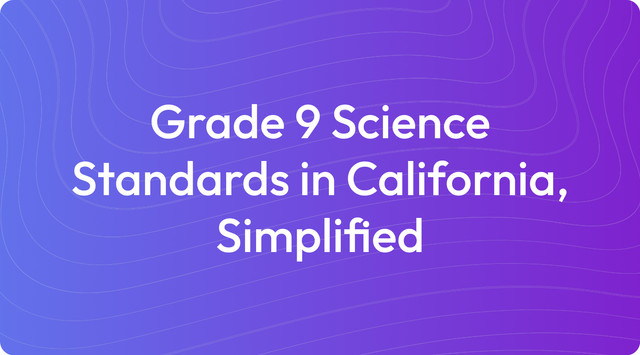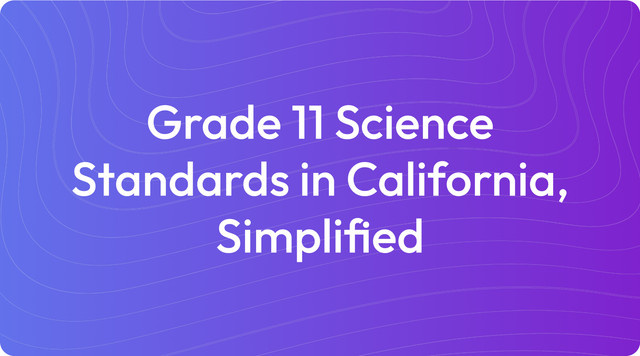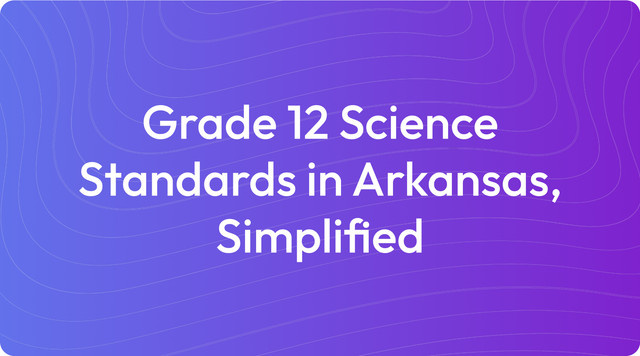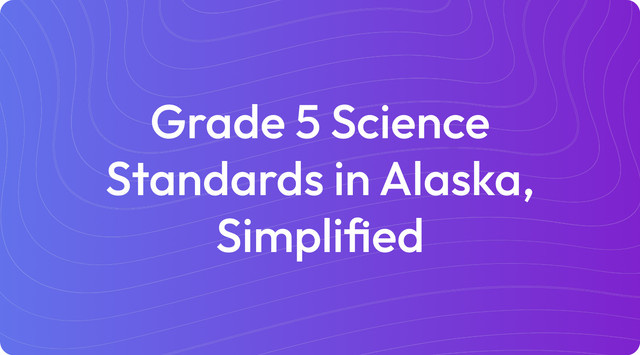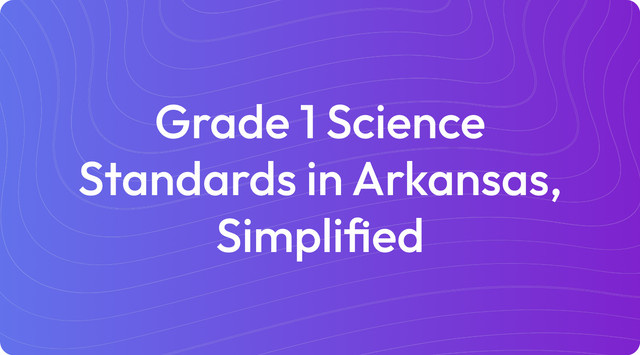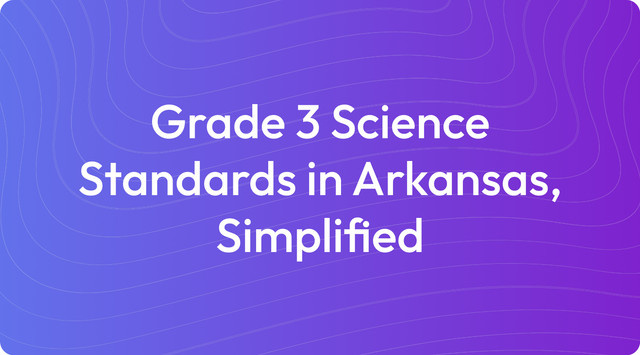Grade 12 Science Standards in Alabama, Simplified
Grade 12 science in Alabama offers advanced or elective topics in biology, physics, chemistry, or environmental science. Explore more—read on TeachShare!
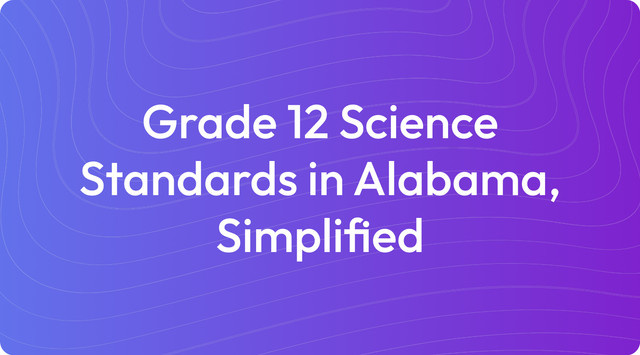
At Teachshare, we understand that working with state standards can be a complex part of your job. These guidelines shape what you teach and how student progress is measured. Our goal is to provide clear, practical resources that help you connect with these standards in your classroom.
Education standards are learning goals that outline what students should know by the end of a course or grade level. For teachers, this means you have a clear framework for your curriculum, but you retain the flexibility to decide how to teach the material. For example, Alabama's Grade 12 science standards focus on key areas like Forces and Motion or Earth's Systems, setting expectations for critical thinking and problem-solving without dictating specific lesson plans.
What Are Grade 12 Science Standards in Alabama?
Alabama's Grade 12 science standards are designed for advanced courses like Physics and Earth and Space Science, building on the state's 2015 Course of Study. These standards push students to develop critical thinking and problem-solving skills. The goal is to prepare them for college and STEM careers by having them apply complex concepts to real-world situations.
Key Areas of Grade 12 Science Standards in Alabama (Physics Focus)
The standards for the Physics focus include:
1. Forces and Motion
- Analyze and interpret data to describe the motion of objects using mathematical representations (e.g., velocity, acceleration, force).
- Develop and use models to explain Newton’s Laws of Motion and their application in real-world systems (e.g., vehicles, projectiles).
2. Energy and Its Interactions
- Construct explanations for the conservation of energy in systems and how energy is transferred (e.g., mechanical, thermal, electrical).
- Investigate wave properties, including amplitude, frequency, and wavelength, to explain how waves transfer energy.
3. Electricity and Magnetism
- Plan and conduct investigations to explain the relationship between electric currents, magnetic fields, and forces (e.g., electromagnets, circuits).
Key Areas of Grade 12 Science Standards in Alabama (Earth and Space Science Focus)
For the Earth and Space Science focus, the key areas are:
1. Earth's Systems and Processes
- Analyze data to explain the cycling of matter and energy in Earth's systems (e.g., water cycle, rock cycle).
- Evaluate evidence for the processes that drive plate tectonics and their effects on Earth’s surface over time.
2. Space Systems
- Develop models to explain the life cycle of stars and the role of gravity in the formation of galaxies and planetary systems.
- Use mathematical and computational models to analyze the motion of objects in space (e.g., orbits, gravitational forces).
3. Human Impact
- Investigate how human activities influence Earth's systems (e.g., climate change, resource depletion).
Key Learning Goals for Grade 12 Science in Alabama
Across these subjects, the main learning goals are:
- Develop and Apply Models: Students construct models to explore forces, energy, wave behavior, Earth’s systems, and space phenomena.
- Analyze Data: Students interpret data to investigate motion, energy transformations, Earth processes, and human impacts.
- Solve Problems: Students apply advanced concepts to solve real-world challenges, such as improving energy efficiency or understanding planetary motion.
The framework for these standards is guided by the Alabama Department of Education and aligns with broader national science topics.
Key Tested Standards
The key tested standards for Grade 12 science in Alabama assess a student's ability to analyze data, construct models, and solve real-world problems. Based on the Alabama Course of Study: Science (2015), these standards focus on Physics, Earth and Space Science, and other advanced courses. They emphasize critical thinking and scientific inquiry in areas such as forces, motion, energy, space systems, and Earth's processes.
Key Tested Standards for Grade 12 Science (Physics Focus)
1. Forces and Motion
- Standard 1: Analyze and interpret data to describe the motion of objects using mathematical representations (e.g., velocity, acceleration). This is key because it builds foundational knowledge of kinematics and has real-world applications like vehicle safety and projectile motion.
- Standard 2: Develop and use models to explain Newton’s Laws of Motion and their application in real-world systems (e.g., collisions, rockets). This is important as students explore how forces impact objects and design systems based on these principles.
2. Energy and Its Interactions
- Standard 3: Construct explanations for the conservation of energy in systems and how energy is transferred (e.g., mechanical, thermal, electrical). Understanding energy conservation helps students apply physics concepts to engineering and technology.
- Standard 4: Investigate wave properties (amplitude, frequency, wavelength) to explain how waves transfer energy. This standard is critical for understanding sound, light, and their use in communication and medical technologies.
3. Electricity and Magnetism
- Standard 5: Plan and conduct investigations to explain the relationship between electric currents, magnetic fields, and forces (e.g., electromagnets, motors). This allows students to explore practical applications of electromagnetism, such as in circuits and power generation.
Key Tested Standards for Grade 12 Science (Earth and Space Science Focus)
1. Earth's Systems and Processes
- Standard 1: Analyze data to explain the cycling of matter and energy in Earth's systems (e.g., water cycle, rock cycle). This standard connects natural processes to environmental and geological phenomena like erosion, weathering, and tectonics.
- Standard 2: Evaluate evidence for processes that drive plate tectonics and their effects on Earth's surface over time. Understanding plate tectonics is crucial for explaining earthquakes, volcanoes, and mountain formation.
2. Space Systems
- Standard 3: Develop models to explain the life cycle of stars and the role of gravity in the formation of galaxies and planetary systems. This standard explains how our universe evolves, laying a foundation for astrophysics.
- Standard 4: Use mathematical and computational models to analyze the motion of objects in space (e.g., orbits, gravitational forces). With this, students explore celestial mechanics and the role of physics in space exploration.
3. Human Impact
- Standard 5: Investigate how human activities influence Earth's systems (e.g., climate change, resource depletion). This standard encourages students to evaluate how human actions affect sustainability and explore solutions for reducing environmental impact.
Why These Standards Are Key for Testing:
These standards assess students’ ability to:
- Analyze Data: For example, interpreting graphs of motion, energy changes, tectonic activity, or climate data
- Develop and Use Models: For example, creating models of forces, waves, stellar evolution, or Earth’s systems
- Apply Math and Science: Using equations for velocity, acceleration, energy conservation, or gravitational forces
- Solve Real-World Problems: Designing solutions for energy efficiency, environmental sustainability, or space exploration
The information on these standards is guided by resources from the Alabama State Department of Education, where you can also find specific graduation requirements, and aligns with topics from the Next Generation Science Standards.
Example Learning Objectives for Unit Planning
Learning objectives break down broad standards into specific, measurable goals for your students. They clarify what students should be able to do by the end of a lesson or unit, making it easier to plan instruction and assessments.
To help you translate these standards into your classroom, here are some examples of learning objectives for two key areas in Grade 12 Science. We've written them in student-friendly "I can" statements that align with the Alabama Course of Study: Science (2015):
Standard: Develop and use models to explain Newton’s Laws of Motion and their application in real-world systems (Standard 2, Physics Focus).
- I can explain Newton’s First Law (inertia) and how it applies to objects at rest or in motion.
- I can describe Newton’s Second Law (F = ma) and calculate the force, mass, or acceleration of an object using data.
- I can use Newton’s Third Law to explain how forces interact during collisions or propulsion (e.g., rockets).
- I can design and test a model (e.g., a balloon car or rocket) to demonstrate Newton’s Laws of Motion.
Standard: Develop models to explain the life cycle of stars and the role of gravity in the formation of galaxies and planetary systems (Standard 3, Earth and Space Science Focus).
- I can describe the stages in the life cycle of a star, from nebula to white dwarf, neutron star, or black hole.
- I can explain how gravity influences the formation of galaxies, stars, and planetary systems.
- I can create a model to compare the lifecycle stages of small, medium, and massive stars.
- I can analyze data (e.g., light spectra or star charts) to determine the characteristics of stars at different stages.
Key Changes & Updates
The Grade 12 Science Standards, rooted in the Alabama Course of Study: Science (2015), have been refined to better prepare students for college coursework and careers in STEM fields. The updates place a greater emphasis on advanced scientific inquiry and real-world problem-solving. This shift encourages students to move beyond theory and engage in in-depth investigations, using data analysis and hands-on learning to connect complex topics in Physics and Earth and Space Science to practical applications.
Key changes include the integration of engineering design practices, where students are expected to design, test, and refine solutions to scientific challenges. There is also a stronger focus on data analysis and computational thinking, requiring students to interpret information from graphs and models. The curriculum has expanded to include deeper explorations of forces, energy, space systems, and human environmental impact. These updates help students build critical thinking skills and apply mathematical and literacy concepts to scientific contexts, preparing them for future opportunities.
Create with TeachShare
We know that turning these detailed science standards into engaging classroom materials takes time and effort. Our platform is designed to help you create high-quality, standards-aligned resources quickly, so you can focus more on teaching. Start creating standards-aligned instructional resources with TeachShare now.
Frequently Asked Questions
What are the main topics covered in Grade 12 Science in Alabama?
In Alabama, Grade 12 Science allows students to concentrate on one of two paths: Physics or Earth and Space Science. Here is a breakdown of the topics for each course:
- Physics: Topics include forces and motion, energy transfer, wave behavior, and electricity and magnetism.
- Earth and Space Science: This course covers Earth's systems like the cycling of matter, space systems like stellar evolution, the motion of celestial objects, and human impact on the environment.
What is different about the Alabama science standards?
The Alabama Course of Study: Science (2015) was designed to deepen student learning by focusing on a few key areas. The standards place a strong emphasis on the following:
- Advanced Scientific Inquiry: Students are encouraged to perform in-depth investigations and experiments.
- Real-World Applications: The curriculum connects science to practical matters, such as energy efficiency and environmental sustainability.
- Engineering Integration: Students get to design, test, and improve solutions for real-world challenges.
- Data Analysis: A major focus is on teaching students to collect, analyze, and interpret data to make evidence-based conclusions.
What are some examples of activities that align with the standards?
You can bring these standards to life with hands-on activities. Here are a few ideas for each subject:
- For Physics: Students can calculate acceleration using distance-time graphs, build circuits to explore voltage and resistance, or model energy transformations with pendulums.
- For Earth and Space Science: Activities include creating models of the rock cycle, analyzing star charts to understand the life cycle of stars, or investigating the local impacts of climate change.
How do these standards connect to real-world applications?
These standards are designed to give students practical knowledge they can apply outside the classroom. They help students do the following:
- Understand the physical systems that apply to technology, transportation, and engineering.
- Explore space phenomena, including gravitational forces, planetary orbits, and how galaxies form.
- Address environmental challenges like climate change and resource depletion by thinking through sustainable solutions.
How are students assessed in Grade 12 Science?
Assessment focuses on demonstrating understanding through application, not just memorization. Students are typically assessed through:
- Investigations: Conducting experiments on concepts like motion, energy transfer, or human impacts on Earth.
- Models and Projects: Creating models to show their understanding of forces, wave behavior, or stellar evolution.
- Data Analysis: Interpreting graphs, charts, and simulations to describe different phenomena.
- Explanations: Writing evidence-based explanations to communicate their findings clearly.
Answer


